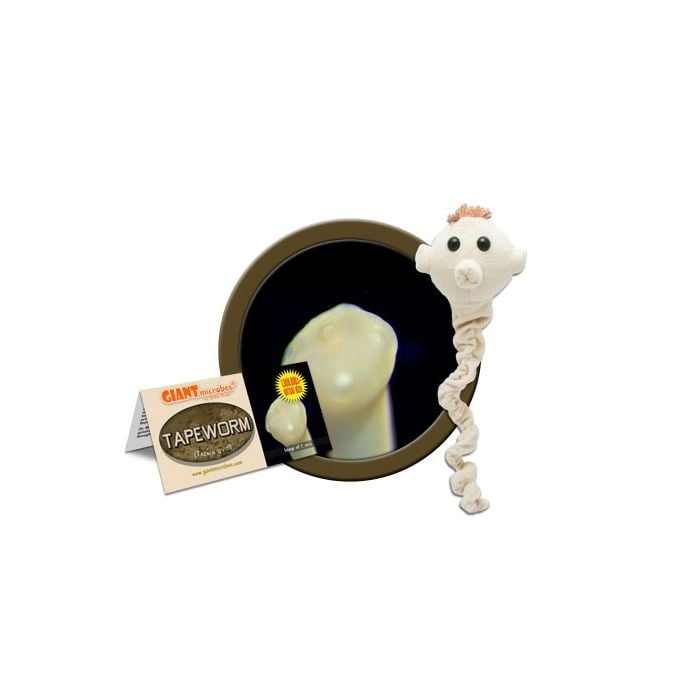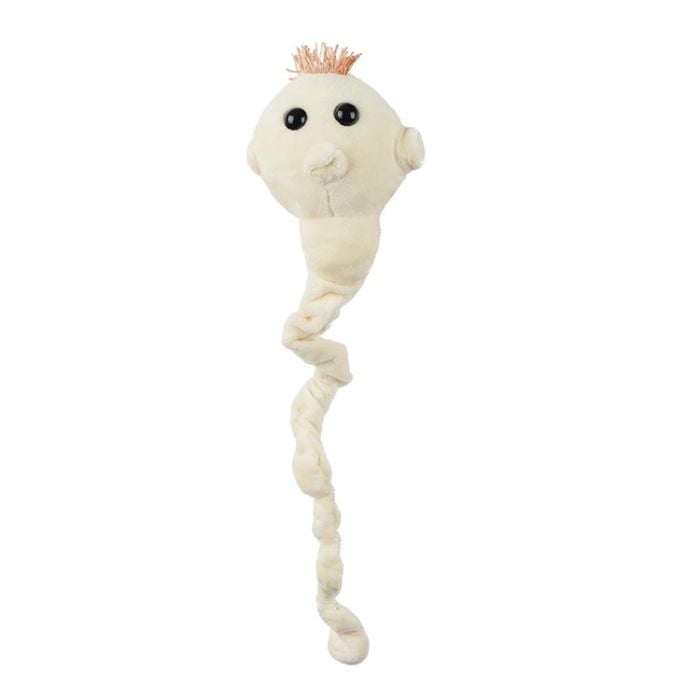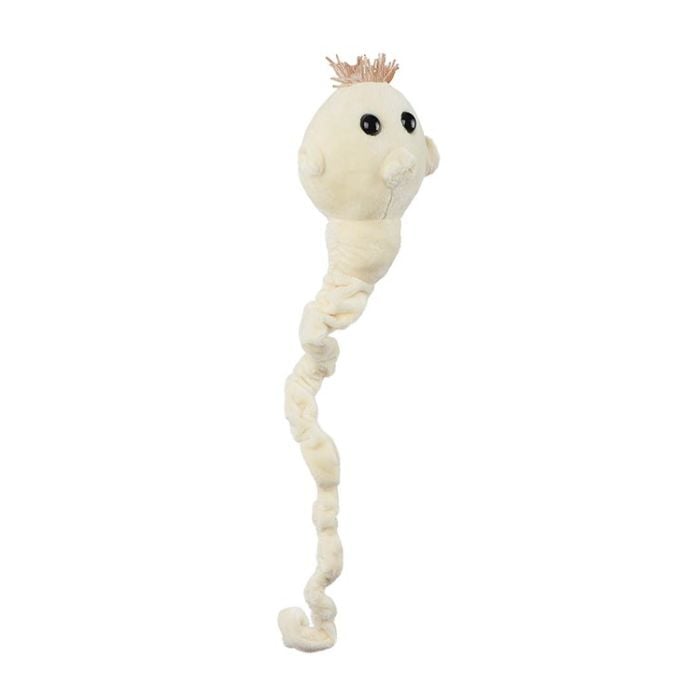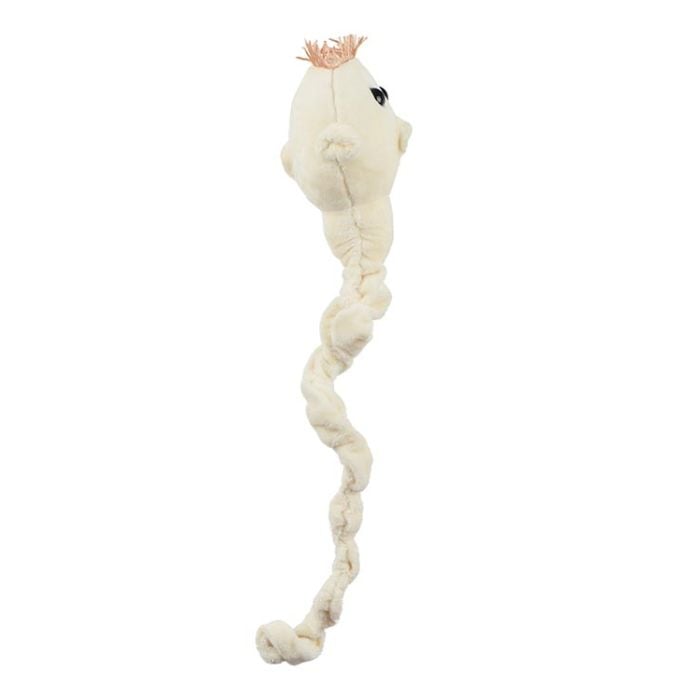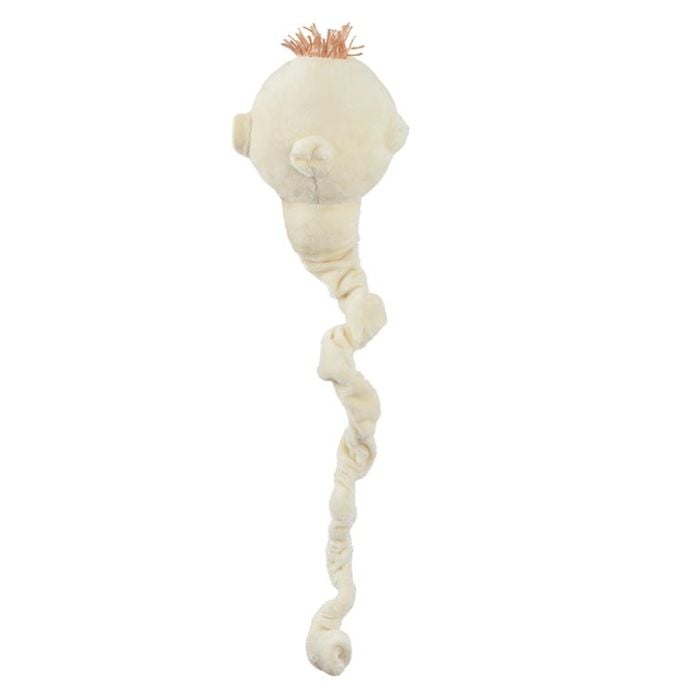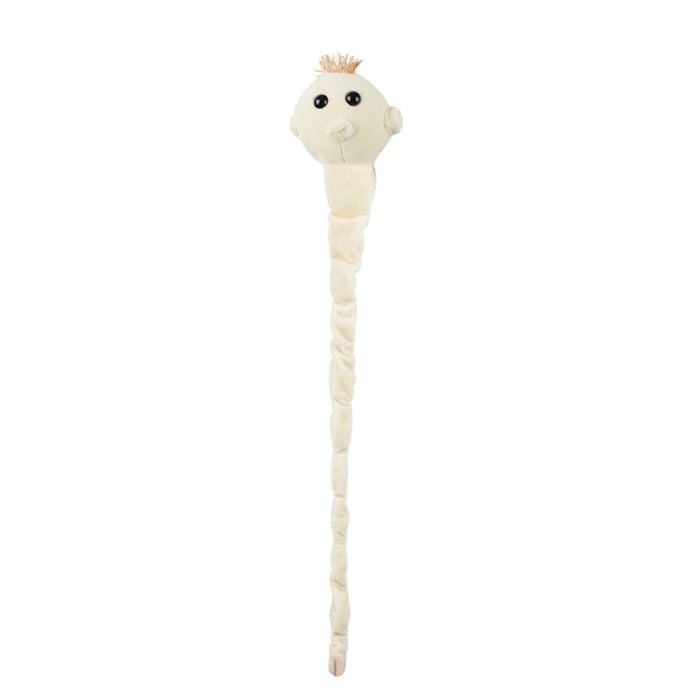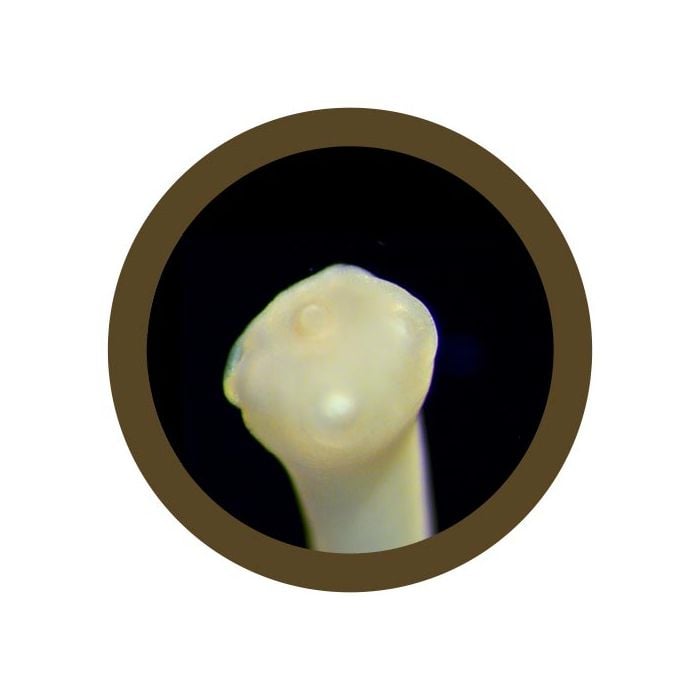Tapeworm (Taenia ovis)
Tapeworm doll has elastic in its tail that makes it stretch!
Product Details
Additional Information
| Sizes | Giantmicrobes are based on actual microbes, cells, organisms and other critters, only 1,000,000 times actual size! Gigantic (GG) 16-24" XL (XL) 10-15" Original (PD) 5-8" Keychain (KC) 2-4" with clip |
|---|---|
| Materials | Plush from all new materials. Stuffed with polyester fiber fill. Surface washable: sponge with water & soap, air dry. |
| Packaging | Each plush microbe includes a printed card with fun, educational and fascinating facts about the actual microbe or cell. |
| Safety | Every product meets or exceeds U.S. and European standards for safety. For ages 3 and up. |
All about Tapeworm (Taenia ovis)
FACTS: There are over a thousand types of flat parasitic worms which can inhabit the gastrointestinal tract of vertebrates. But none of them is a welcome guest!
Tapeworms attach their scolex, or head, to their host’s intestinal system using hooks and suckers. From this head, a long, flat strobila comprised of numerous segments, or proglottids, is generated. Each of these segments is in fact a working organism, with an independent means of digestion and a hermaphroditic reproductive system.
As new segments develop, the chain grows longer and longer and eventually the old segments at the end of the tail break off, emerging from the host in a predictable manner. If they are fortunate enough to be ingested, their eggs can mature – typically in an intermediate host – into larvae, each of which can go on to achieve greatness of its own.
Tapeworms can live twenty years and grow to 50 feet long. (In fact, the Polygonoporus giganticus that makes its home inside of the whale gut can grow to 100 feet long!)
But although tapeworms often cause no symptoms, abdominal discomfort, fatigue, and loss of appetite are not uncommon. Fortunately, tapeworms can usually be treated with simple oral medication, often in a single dose.
Nevertheless, discretion is the better part of valor, and avoiding undercooked food is advisable, as it greatly reduces your risk of playing host to this unwelcome guest.
| Name | The genus name, ‘Taenia’, describes the long, flat anatomy of tapeworms. The species name, ‘ovis’, comes from ancient Greek to describe their target animal, sheep. |
|---|
| Actual Size | An adult worm can grow up to 5 meters. |
|---|
| Where It Lives | Taenia ovis, also known as sheep measles, is a tapeworm parasite that is found in dogs and sheep. They’re essentially spread through a fecal/oral route between the dog and sheep. |
|---|
| Symptoms | T. ovis can cause diarrhea in dogs, but isn’t known to cause harm to humans or sheep. However, it can downgrade the meat quality in livestock, restricting how much the farmer can charge for the meat. It’s bad for business! |
|---|
| Cure | Tapeworms are usually treated with anti-helmintic, or anti-parasitic, drugs that kill the tapeworms. The body then degrades the tapeworm. |
|---|
| History | Based on the research by Eric Hoberg, an American parasitologist, these critters may have evolved as early as 2 million years ago! |
|---|
| Fascinating Facts | New research suggests that infections with certain parasitic worms early in life are associated with a reduced asthma and allergies later in life. |
|---|









